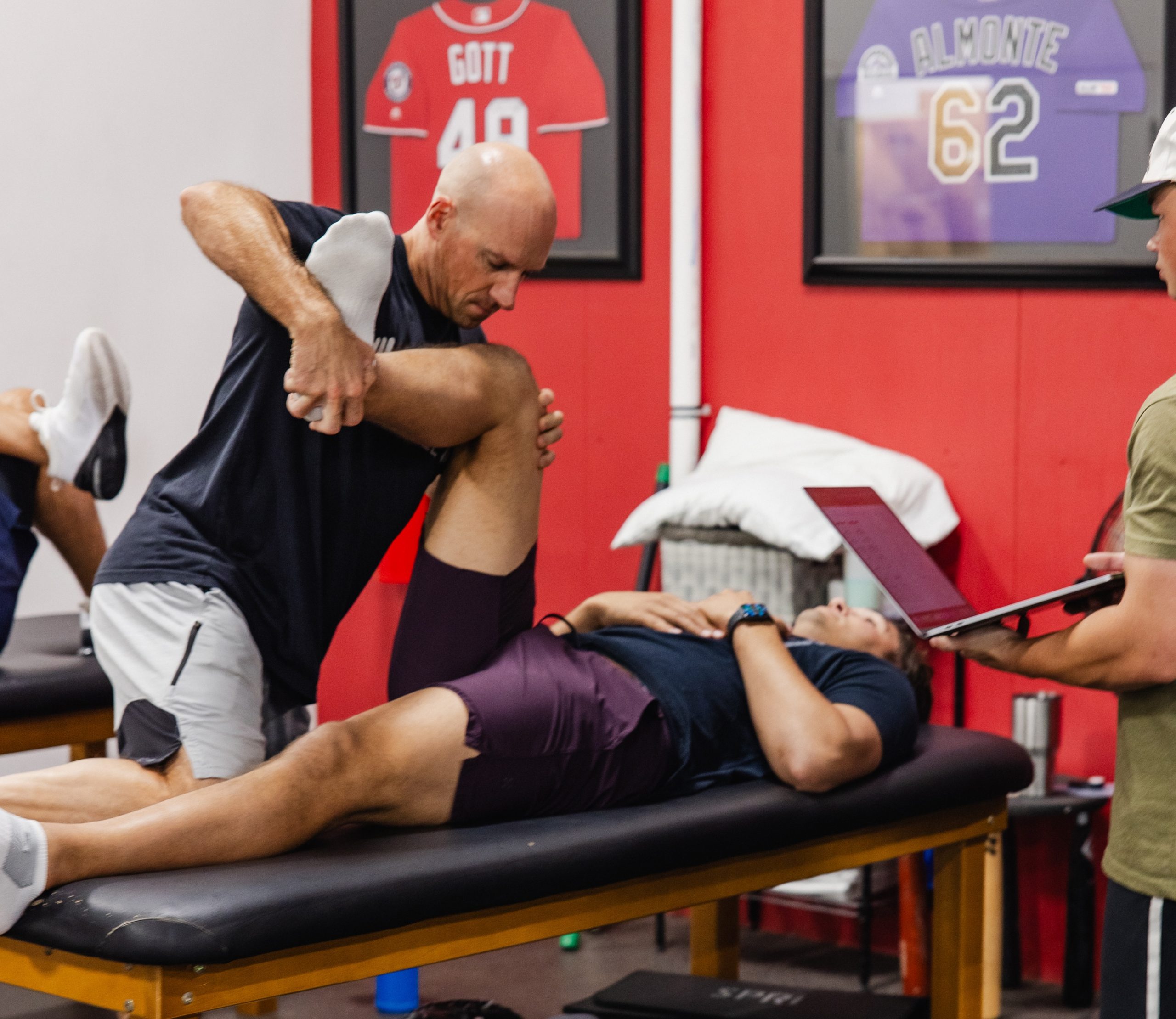
Random Thoughts on Sports Performance Training: Installment 40
Written on May 20, 2024 at 3:28 am, by Eric Cressey
I’m long overdue for a new installment of this long-term series, so hopefully I’ve got a bit of something for everyone in this.
1. Strength and conditioning is a supportive discipline.
Skill almost always trumps fitness, but fitness is what allows you to optimize skill. You can’t get in high quality reps if you’re broken, and we have evidence to suggest that regular exercise optimizes cognition and motor learning. I think this is actually one more avenue via which early sports specialization eventually falls short after the initial gains of specificity wears off: you need more general fitness capacity to get in higher quality specific work.
The absolute best strength and conditioning coaches I know are awesome at understanding their role is to set skill coaches up for success with athletes. However, at the same time, they know how to recognize when fitness is the limiting factor and speak up to advocate for the appropriate physiological adaptation to take an athlete to the next level.
2. Maybe your sleep habits aren’t so terrible – or maybe everyone’s actually are that terrible?
This Brazilian systemic review of 11 studies looking at the sleep quality of Olympic athletes was pretty eye-opening (bad pun, huh?). The takeaways begin with this: “over half of the athletes have poor sleep quality and complaints.” More specifically:
- Total sleep time averaged 6 hours, 10 minutes per night
- Sleep efficiency averaged 84%
- Sleep onset latency averaged 28 minutes
- Awakenings after sleep onset averaged 49 minutes
After I got over my initial shock that so many Olympic athletes are this bad with their sleep, I had to admit that this made me feel a bit better about myself as a 43-year-old father of three who’s trying to fight off the dad bod in spite of my lack of sleeping prowess. However, it didn’t make me feel great about today’s athletes’ (not just Olympians) prioritization of sleep. Travel for Olympic athletes isn’t nearly as extensive as it is for in-season professional athletes, so it’s fascinating to me that this class of athletes could struggle so much while typically being in one place to train. That said, I’m sure there are other factors – most notably the economic hardship of being an amateur – that could impact this dynamic, but that’s a discussion for another day.
With respect to sleep, there’s some very low hanging fruit for athletes who want to pick it and get a massive competitive advantage over their competition:
- Make your room cold and dark.
- Limit heavy meals in the hours right before bed.
- Stop staring at phones, tablets, computers, and TVs in the hour before bed.
- Wind down in the hours before bed: meditate, read, etc.
- Limit caffeine intake after noon.
If you’re looking for a detailed podcast on this topic, here’s a great listen:
If teenage athletes want to take a big step forward in development, it would be wise to make an effort to “out-sleep” and “out-eat” their peers. These two things are powerful magnifiers of everything they do in skill development and strength and conditioning. @FlatgroundApp
— Eric Cressey (@EricCressey) August 21, 2019
3. Strength and conditioning “spacing” is a lot like soccer.
A lot of young coaches struggle to make the adjustment from one-on-one coaching to scenarios in which they need to handle more than one athlete at a time, especially in large facilities/spaces. If you’re not careful, you can get locked in to one conversation with an athlete while there’s chaos – poor weight selection, bad technique, insufficient effort, etc. – all around you. A cue I’ll often give to younger coaches is one that was always shouted in my youth soccer days: find space.
In other words, go to where other players aren’t, and you’ll be able to see the field better and provide an open passing option for your teammates. When everyone bunches up, you miss the big picture and limit your options to contribute.
4. Adductors have far reaching implications.
I wish more people had a true appreciation for what massive implications adductor (groin) length and strength has on overall lower extremity and lumbopelvic health. Adductor longus, adductor brevis, adductor magnus, pectineus, and gracilis make up a huge portion of the cross-sectional area of the thigh, but they also have direct attachments on the pelvis, entire length of the femur, and lower leg (gracilis insertion on pes anserine as a conjoined tendon with sartorius and semitendinosis):
We’ve got research that shows that folks can get hurt when adductors are weak (hockey players) and if they’re too strong (relative to weaker abductors in knee patients). There are implications in terms of sports hernia challenges in light of the adductor longus insertion on the pubis, and adductor density/length restrictions are clearly part of the bigger challenge that is anterior pelvic tilt/limited hip internal rotation/femoroacetabular impingement. The solution for most people is relatively simple, though: spend more time in the frontal plane.
Roll them out (or get some decent manual therapy in there).
Add some mobility drills.
Build some strength through a sizable range-of-motion.
Note: I talk about this a lot in Functional Stability Training of the Lower Body.
Once you’ve done all that, mix in some “movement fun:” side shuffles, carioca, lateral runs, and sprinting and change-of-direction to preserve your frontal plane athleticism. Classic strength and conditioning programs spend far too much time in the sagittal plane, so the more you can mix it up with frontal and transverse plane work, the better your long-term health and performance outcomes will be.
Sign-up Today for our FREE Newsletter and receive a four-part video series on how to deadlift!






